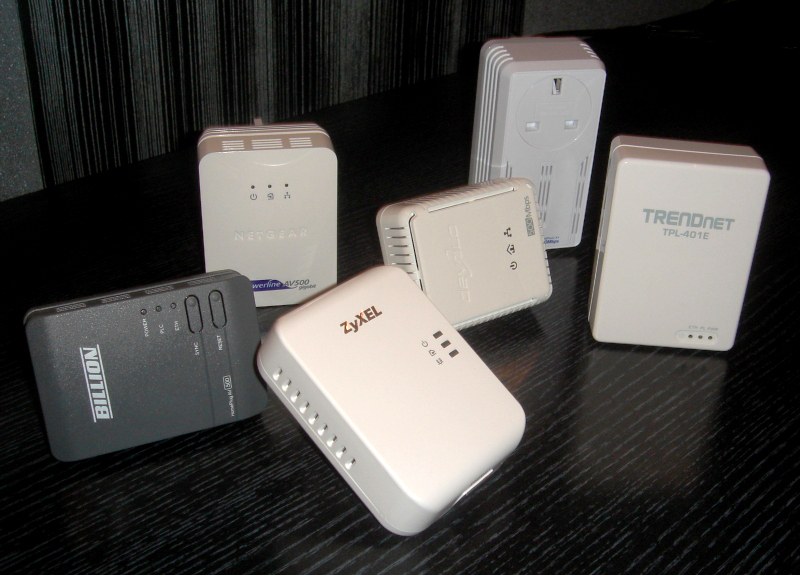My Test Outcome
My little test turned into a big group test, and it's just impossible to condense that into a forum post. I did begin to write up a review though, here's a tiny summary in the form of excerpts:
Netgear XAVB5001
Zyxel PLA4205
Trendnet TPL-401E2K
Billion BiPac P108
Devolo dLAN 500 AVmini
Solwise NET-PL-500AV-PIGGY
Performance
At typical locations, the Netgears consistently negotiated a higher link rate, with a corresponding throughput advantage in the order of 20-35% over their nearest competitor. A clear pattern and order of performance emerged for the rest too, and it was remarkable how this remained consistent across most sockets. There was a second best group of the Zyxel and Trendnet, closely followed by a third best group of the Solwise and Devolo. The Billion was a distant last - always a slow, erratic and dreadful performer.
At the best location, where the going was good, the plugs all performed identically (and I mean identically) with single stream, simulatenous up/down and four stream tests. Single stream was 100Mbps measured throughput. The exception was again the Billion which was a little behind even here.
At the worst location, where the going was bad, the plugs all performed just as badly but with the Netgear even here eeking out a small advantage, and the Billion still much worse than the rest. Single stream was 24Mbps here.
Short-term throughput was steady without dropouts, just like wireless can achieve with a steady signal.
Vs Wireless
In terms of throughput around the house, there is no clear winner. At the Typical Location (what I named one specific location for testing and with recorded IxChariot plots), the powerlines would easily beat any wireless because the path has many walls and a ceiling to penetrate. Yet conversely, at the Worst Location, wireless would easily beat the powerlines because the path it is just a short distance across the hallway. In general, the spread of typical real-world speeds probably overlap quite closely.
Powerlines have the big advantages of no deadspots and decent throughput even in the furthest reaches of a house, and no interference in the airspace.
Long-term performance however was remarkably inconsistent. On some days, at some times, performance would just be mysteriously poor. There was nothing I could do to control it. At my intended location, the performance on a good day averaged 60Mbps, but on some days was dipping below 30Mbps. In the end, this led me to abandon my planned use of powerlines.
Audible Noise
Someone specifically asked about noise. For all intents and purposes, all the plugs were silent with two notable exceptions:
The Zyxel made a high-frequency fizzing and whining noise in standby mode; the nature and spectrum of the noise might make it distracting if you need total silence.
The Trendnet made a louder high-pitched whistle noise in all modes; although still quiet, it could be heard 3m away over a laptop fan and therefore might easily be distracting. I noted that one of the plugs was always significantly louder than the other.
Software
Trendnet, Billion and Solwise all provide the Atheros OEM utility for Windows. They are identical, with just simple branding replacement. You can use the software to: check link rates to and from each plug, display and update firmware verions, create separate networks on the same mains, see MAC addresses of the plugs, name the devices and enter a manual encryption key.
Netgear, Devolo and Zyxel all provide their own custom utility. You can’t mix and match these utilities with plugs from other manufacturers : the Devolo utility won’t work at all, and with the others you will find features missing as well as incorrect or blank firmware reported. The Netgear and Zyxel plugs also have extra, unique features only accessible from their respective utilities and so you should stick with these if you have those plugs.
The Netgear utility was my favourite of all and unlike the others, it offers a Mac version and doesn’t annoyingly install WinPCap in the background. The Atheros utility was good and did its job fine. I found the Devolo a real pain to use however, even for such a piece of simple software.




